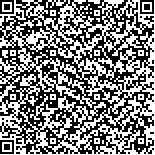下载中心
优秀审稿专家
优秀论文
相关链接
摘要

好奇是科学与技术发展、不断创新的源泉,实用则是科技发展、创新的结果服务人类、回馈社会,两者无不例外共同不断地驱动着合成孔径雷达技术和森林地上生物量反演的研究和发展。在全球气候急剧变化的今天,好奇和实用的平衡则更加至关重要。地球陆地表面森林面积大小和树木生物量是估算各国或者全球碳储量、排放及其变化的重要参数。好奇已产生的成功案例表明,树木生物量的反演与全极化、极化干涉、层析合成孔径雷达SAR(Synthetic Aperture Radar)技术及数据集紧密相关。反思过去,兼顾好奇和实用,对地上树木生物量的反演,建议将来考虑以下4种方案,即星载双波段SAR和异速方程(Allometric Equation),星载激光雷达LiDAR(Light Detection and Ranging)和异速方程,第3个方案是前面两个方案的结合,方案4为探索和好奇性的。
Curiosity is the source of science and technology development, and continuous innovation. Application shows how humanity and society benefit from the development and innovation of curiosity-driven. There is no exception that the development of Synthetic Aperture Radar (SAR) technology and inversion of aboveground biomass (AGB) in forested environments around the globe have been continuously driven by both curiosity and application. With the rapid climate change worldwide today, the balance of curiosity and application acts is of ever significance. The areal extents and AGB of trees in forested areas around the world are fundamental for the assessment of the global carbon stock and emission, and their variation. Of successful curiosity-and application-driven examples, the AGB estimation has been strongly coupled with quad-pol SAR, interferometric SAR (InSAR), and tomography SAR (TomoSAR) techniques and their datasets. With the reflection of the past and the balance of curiosity and application, the following four approaches are recommended for the assessment of the global AGB in the future. They are the spaceborne dual-wavelength SAR systems and allometric equations, the light detection and ranging (LiDAR) and allometric equations, the combination of the first two approaches, and the exploratory one.

